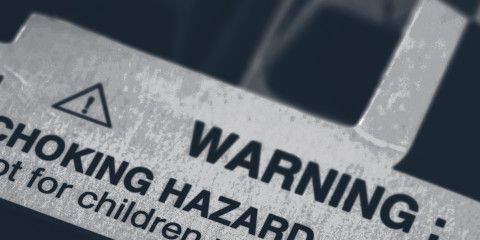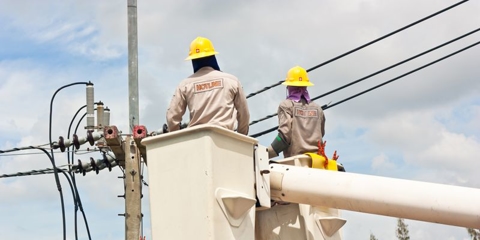Late last month, a jury found Time Warner Cable 98% liable for the February 2013 gas leak explosion that leveled JJ’s Restaurant in the Country Club Plaza in Kansas City, Missouri. The jury applied the remaining 2% to JJ’s. Kansas City news outlets immediately reported the verdict online. Some online vitriol followed, with people commenting on news stories that “TWC sucks” and “I THINK WE ARE SWITCHING TO DIRECT TV.” Others defended the cable company, calling the verdict “very poor judgment” and speculating about the involvement of Heartland Midwest and Missouri Gas Energy. After all, Heartland Midwest, which Time Warner Cable hired to lay cable in the street for new construction, is the company that actually hit a gas line and caused the leak in the first place. Heartland Midwest hit the gas line while allegedly using an expedited boring method of laying cable rather than the more careful method of digging trenches. Missouri Gas Energy, which responded to the gas leak, was alleged to have been egregiously slow and disorganized in its response to stop the leak and evacuate the area.
There is often a lot going on in the background of any trial that the general public and even the jury know nothing about. The reason for this is that juries are intended to decide facts rather than the law. The law is the result of hundreds of years’ worth of attorneys and judges litigating previous similar cases, resulting in legal principles intended to guide us all on what is or is not relevant in a given dispute. Law may also result from the people’s elected representatives debating and making legislation. It is then up to the jury to resolve factual disputes which are relevant within the existing legal framework.
So is this very lopsided verdict in the JJ’s trial another reason to dislike Time Warner Cable? In other words, how much is Time Warner Cable really to blame for what occurred? The law actually provides a system to figure this out in what is a pretty fair way, but you would never know that from the news headlines or the public’s comments about those headlines.
Most if not all states, including Missouri, have what is called a “comparative fault” system. Basically, this is where the jury is asked to decide what percentage fault all parties are to blame for an accident. The jury then decides how much damages were incurred irrespective of its fault determination. It is then up to the Court to do the math and hold the defendants responsible for only their respective percentage shares of the total damages.
However, that may or may not be the end of the story. The law also provides that defendants are entitled to a credit for any amounts the plaintiffs already received from other potentially responsible parties that settled prior to trial. In Missouri, Section 537.060 of the Missouri Statutes requires any damages award in favor of the plaintiffs to be reduced by the amount of any settlement proceeds already received from other parties who might have been jointly responsible but not present at trial. Section 537.060 also prevents anyone from bringing settling parties into the trial, thus preventing the jury from ever having an opportunity to hear from all potentially responsible parties and apportion fault as it sees fit according to a complete and fair presentation of the evidence (e.g. a presentation in which the settling parties are there to defend themselves and implicate others).
Although this rule tends to prevent the jury from getting the full story, it is nonetheless a good rule. It is a good rule because it promotes settlement and saves judicial resources. Obviously, a trial with two defendants is a lot simpler and easier than a trial with four defendants. Also, settlements can save many thousands of dollars in attorneys’ fees for litigants.
However, if the jury knows or even suspects that other potentially responsible parties have settled, there is a danger the jury will place undue emphasis on the settlements despite it having no knowledge of the settlements’ terms, the settlements’ amounts, or the circumstances under which the settlements were negotiated. This is dangerous for a number of reasons, including the fact that sometimes parties settle just to avoid having to pay attorneys’ fees or because of the inherent unpredictably of trial.
The way the Court attempts to solve this problem is by instructing the jury to apportion fault only among the parties who are actually at trial (including the plaintiffs) and precluding the jury from ever knowing about the settlements. If the jury does somehow gain knowledge of a settlement, any party can ask the Court to instruct the jury to not consider the settlement in either assessing fault or calculating damages. See Missouri Approved Jury Instructions (MAI) Civil 34.05, 1.06, 2.07 and 21.06. Again, the Court takes care of deducting the amount of the prior settlement from any verdict rendered by the jury, and the Court will inform the jury of this in the event the jury learns of the settlement. Id.
So is that what happened in the JJs case? Is that why Missouri Gas Energy and Heartland Midwest were not at trial and did not make headlines for being 98% at fault? Interestingly, both Missouri Gas Energy and Heartland Midwest were originally parties to the case but were dismissed before trial. Unfortunately, any pretrial settlements that may have been reached with these entities are likely and rightly confidential. Potential defendants should be encouraged to take responsibility for their actions without a trial, and allowing defendants to enter into confidential settlements (and potentially avoid headlines) provides some of that encouragement.
So here is the bottom line: Regardless of Time Warner’s actual moral blame for the accident, the jury was given the opportunity to assess fault among only some of the parties who were allegedly involved in this terrible catastrophe. Also, the jury was instructed that its total fault assessment must equal 100 percent. In this case, rather than finding that no party was at fault, which the jury could have done, it assessed 2% fault on the plaintiffs and put the rest on Time Warner Cable. The company responsible for locating the gas line for Heartland was also a defendant at trial, but the jury assessed zero fault to that company.
This system strikes probably the best possible balance between encouraging settlements but preventing the jury from placing undue emphasis on priors settlements it knows nothing about. The significance of the settlements is then taken care of on the back end, with the Court deducting the settlements from the amount to which the plaintiffs would otherwise be entitled.
However, this does not stop rampant speculation in news headlines or in the community. It also unfortunately does not stop the attorneys defending the remaining parties at trial from trying to exploit the natural speculation caused by allegedly “missing” parties. In this case, the attorney representing the pipe locator even made the apparently missing parties the theme of his closing argument. The reality is that defense counsel in a case like this would love for the jury to speculate about prior settlements and to believe the plaintiffs have already received money. Indeed, this could make the plaintiffs seem greedy.
Thankfully, the jury “got it” in this case and followed the Court’s directions. It also probably helped that Time Warner Cable is well known (and perhaps disliked anyway) and was the company responsible for hiring the company that hit the gas line. But is Time Warner truly 98% at fault for the catastrophic explosion that leveled JJs? Well, that is what the jury found. The thing to remember is that Time Warner Cable will end up paying only its fair share to the extent the plaintiffs already received money prior to trial.
In other words, if Time Warner decides to appeal, it will probably not be because of the jury’s 98% fault determination.





